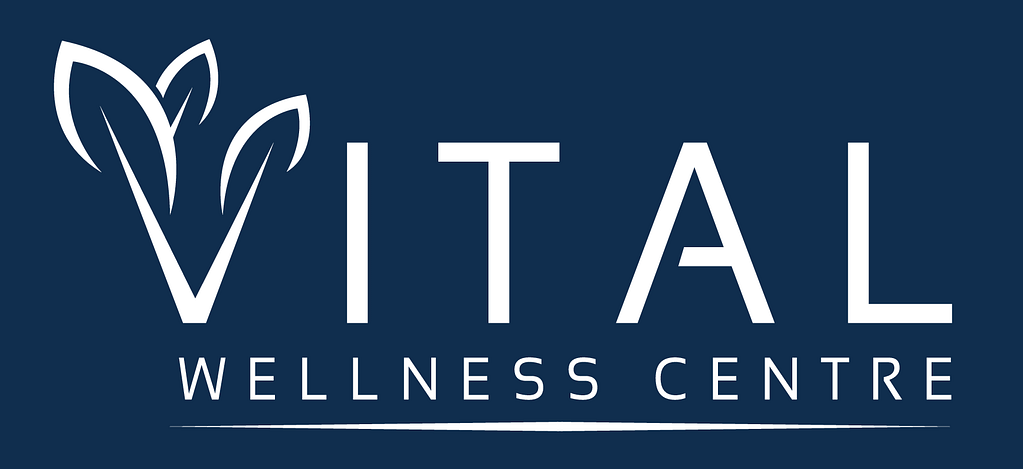Shin Splints can be as annoying as they are painful! This mysterious condition, also known as Medial Tibial Stress Syndrome (MTSS for short) is a frequently a nuisance to runners and skippers alike. However, you're in luck! Here are some proven treatments for shin splints you can do in the comfort of your own home!

Hey You! Looking for a certain part in the post? Use this table of contents to help guide you to where you want to be!
Table of Contents
A Short Shin Splint Story:
Years ago I used to avidly do Muay Thai Boxing, at least x3-4 a week.
Accompanying that was lots of jumping, running, skipping, bouncing and overall just loads of movement.
That also came with loads of stress that my poor shins had to absorb, which eventually turned into pain, a quite debilitating one at that. I couldn’t skip nor run very well without feeling a stabbing, achy discomfort in the front of my shins – right on the inside of them.
After many intense bouts of research I found some ways to help cope, and eventually outright rid myself of most if not all of the symptoms!
Now I am here to share some ways to help end your shin splint story.
What the Heck are Shin Splints?
First thing’s first we’ll have to talk about what shin splints really are.
Shin Splints or a Medial Tibial Stress Syndrome (MTSS) is considered an overuse conditions – a tibial (shin) bone overload injury that’s often associated with a condition called periostitis (inflammation of the periosteum, a thick wrap of connective tissue that surrounds most of our bones).
This strange shin-like pain tends to happen to those that enjoy high impact exercises, where your legs have to absorb shock from you slamming into the ground or something similar to that! Things like running, jumping, skipping and more tend to be actions that lead to more cases of MTSS.
If this sounds like you, then it’s quite possible you could be enjoying the effects of a quite irritating, and at times, debilitating condition that affects hundreds of thousands of people.

That’s basically 1 in 5 people who consider themselves runners! If you’re a runner, take some notes and start some pre-habilitation!
Signs and Symptoms of Shin Splints
Typically there 3 sets of criteria that help health care practitioners identify the presence of MTSS in patients.
- Pain in the lower 2/3rds of the leg.
- Pain during or after some physical activity, which gets better over time with rest.
- No cramping, burning pain or numbness/tingling in the leg or foot.
Important Anatomy you should know!
Here’s some relevant anatomy that you probably need to know about when it comes to your own legs, especially if we want to create a plan of action for treatment of shin splints.

Image Reference: Complete Anatomy App – Anterior Leg Compartment!
MTSS is commonly felt close to the bottom portion of the shin area – otherwise known as the tibia! Either side of the shin muscles can be affected, with the inside being more commonly reported (that’s where I personally felt it).
Scientific literature has shown that the periosteum, the layer of connective tissue between the bone and other soft tissue usually suffers from inflammation during an acute phase of shin splints; and typically pain accompanies inflammation.
Here's what doesn't work -
Ineffective Treatment For Shin Splints.
Of all the potential treatments, remedies and fixes for shin splints, here’s what we’ve found doesn’t work:

Through repeated experiments, research and clinical trials, we’ve found that stretching does not have any profound, positive effect on the outcome of shin pain!
So if you feel inclined to stretch, please go ahead and do so! It feels good, and makes you feel good!
Although, if your goal is to rid yourself of shin pain once and for all, stretching likely isn’t going to be much help.
However, lucky for you, we’ll be going through some things that can help you get back to running, jumping and skipping to your heart’s content!
Treatment for Shin Splints
Without further adieu, here are the treatments for shin splints we’ll be going through that you’ll be able to do right in the comfort of your own home!
*Disclaimer*
It’s always a good idea to check in with your health care professional to make sure that you’re safe to perform these exercises so that you don’t hurt yourself and/or neglect yourself of care that you could be getting in-person. What we discuss in this post isn’t a substitute for medical advice – and is for educational purposes only!
Mobility Exercises
Here we have two super simple exercises to help ensure that we have full lower leg mobility while training to help with shin splints!
First off we have full ankle rotations – our ankle joints are vital when it comes to leaping, hopping, jumping and running. Having a good range of motion to work with can help prevent injury and decrease the chances of overpronation – which is associated with the incidence of shin splints.
Next, we have sciatic nerve glides. The largest nerve in our body is none other than the sciatic nerve – it runs through our posterior thigh and splits into the tibial and common peroneal nerve. This neural glide technique will “floss” your sciatic nerve, as if it were floss for your teeth! This can help with mobility as you’re neurologically affecting the stretch receptors here as well.
These two movements should only be done after a workout, not before – they’re made to help keep you mobile, not warm up for some exercise that you’ll be doing in just a bit!
Strengthening Exercises
Decompression, de-load, de-everything is something people will tell you, and it’s true to a certain extent. However, if you do absolutely nothing for a while, you’ll not only lose progress from the hard work you’ve put into training, but you’ll only experience your shin-splint-like symptoms again since nothing’s really changed over time.
Spreading your training regimen to other realms may be very much worth your time if you’ve only been working on your cardio.
Strength training can help crack down on those symptoms; however I understand it may sound counter-intuitive.
Will Strength Training do more harm than good?
The connective tissue in between your shin bones (fibula & tibia) have suffered damage on a micro-scale, so wouldn’t strength training do the same thing?
Yes and No.
Your symptoms persist because of shock absorbance occurring in your leg when you have to bounce up and down while you run or skip.
Strength training however, unless you’re bent on explosive movements, will not have this occur – and you’ll be building up the resilience, as well as the shock absorbance capabilities in your new legs (which are acquired post-strength training)!
Studies (various ones!) have shown that one of the things that help most in shin splints is shock absorbing pads that are placed into your training shoes. That’s great and all, but we don’t need a crutch here, we want you to be INDEPENDENT of external factors, for the most part at least.-So let’s build up our own shock absorbance!
Massage Techniques & Myofascial Release:
Passive Treatment for Shin Splints
Here we’ll be talking about some massage techniques – things that you can do at home, on your own.
All you’ll need are a foam roller and a recovery ball – and if you don’t have the latter of those two you can use a tennis ball or a lacrosse ball instead!
1. Calf Foam Roll
Here we’ll need a foam roller – you can either choose to do both legs at the same time or just one leg at a time. Remember to hold it down when you feel some tenderness!
2. Tibialis Anterior Massage
This muscle is one of our ankle dorsiflexors – it’s primarily where you’ll feel the symptomologies of shin splints – either here or on the inside of your calf, behind the shin bone. It’s a good muscle to massage – usually wrought with muscle knots!
3. Peroneal Massage
Also known as the fibularis muscles – these guys help evert our ankles, and are very important for control of appropriate ankle movements! These muscle lie right on top of the bone outside of our shin bone – the fibula – so it’s important not to go so hard you end up hurting that bone!
That’s it! These massage techniques can temporarily stave off pain, increase range of motion, and prime you for a day at ease from shin splints! It’s best to do these movements post-exercise, rather than before, as you can end up hurting yourself if you do.
Combine these with the previous tips and videos on rehabbing your shin splints and I’m positive you’ll be running out on top! Get it, running, because running + shin splints? Yes, I do am the funny.
What else can I do?

Finding creative ways to keep doing what you love, whether that’s running, skipping or weight training is key! But remember to be smart about it!
When it comes to shin splints, you don’t want to keep training exactly the same way you were pre-injury, that’s just a recipe for disaster.
Change up your load management – are you doing it x7 a week? Maybe tone it down, or break it up into smaller pieces with more rest time.
Or, you can change up the environment – if you’re used to running on hard concrete, find a nice little soft grounded soil-based forest or something along the lines of that to run in!
This’ll help with the shock absorbance and help with your shin splints, and get you back to where you want to be!
That’s it! That’s pretty much the information you’ll need to help with treatment for shin splints!
Need a little help?
Let’s say that doing it yourself doesn’t really work – that’s fine! Sometimes a little help will come along the way. You can always see a health care professional, wherever you are, and whether or not that’s a Registered Massage Therapist is up to you!
However, if you’re looking to have treatment with a health care professional about a pain problem or functional issue you have, and happen to live in the Greater Toronto Area, specifically Mississauga. You’re always welcome to come see me in person! You can book online with a click of a button!
Book an Appointment!

Richard Lam
Richard is the owner of Vital Wellness centre and practices as a registered massage therapist with a specialty in therapeutic massage, utilizing techniques including manual therapy, contemporary medical acupuncture and PDTR.
Leave a Reply!
connect with us
Don’t be shy, we want to get to know you! Follow us on these platforms and receive unique content related to kick-starting your journey into becoming pain-free.
Recent Posts

Therapeutic Massage: The new revolutionary way of treating pain problems.

Everything you need to know about Relaxation Massages.





